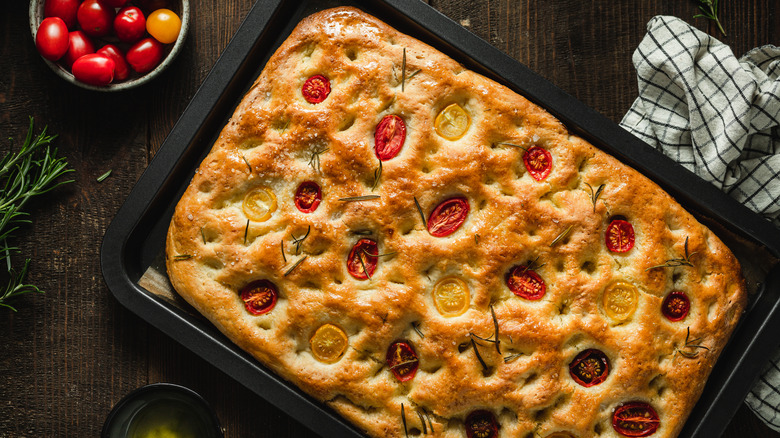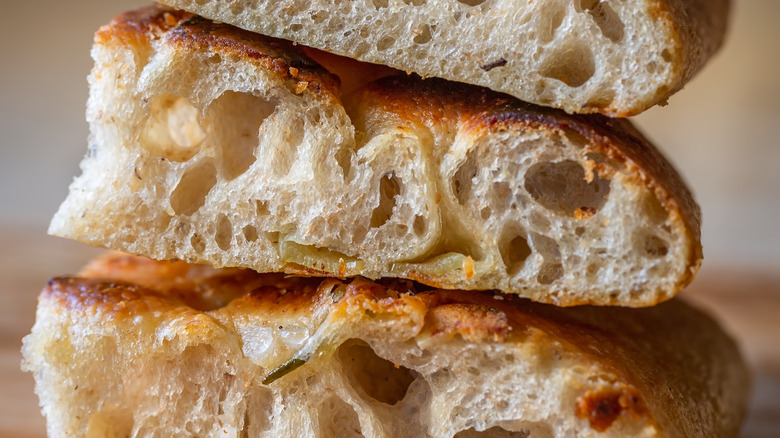How To Store Focaccia (If You Don't Eat It All First)
Focaccia, the salty, savory, olive oil-laden Italian bread, is delicious, especially when consumed fresh from the oven or the bakery. Given the slim chance that you have extra focaccia, we recommend proper storage for your leftovers to ensure you don't miss out on a single bite. Depending on when you plan to eat your leftovers, there are two storage methods you can employ.
If you intend to eat your focaccia within a few days of baking it, storing it at room temperature is your best option. When opting for room temperature storage, you also want to be sure that you're protecting your focaccia from outside air. To do so, you can cut your leftovers into smaller pieces before storing them in an airtight container or wrap your remaining bread in plastic wrap and then place it in a plastic bag.
If you want to take additional storage precautions to ensure freshness (we don't blame you), you can wrap your leftover focaccia in plastic wrap, followed by a layer of aluminum foil, before placing it into a sealed bag. Enjoy your leftovers within two days — if you can wait that long.
Longer term focaccia storage options
Maybe you've been gifted more focaccia than you can consume in one or two sittings, or you've gone on a baking spree with an authentic Italian focaccia recipe and want to save your extra bread. In this case, freezing your focaccia will keep it fresh for roughly a month. To freeze your bread, you'll want to divide it into square-shaped pieces and flash freeze it before a final freeze.
Start by placing your focaccia pieces on a baking sheet lined with parchment paper. This step ensures that your bread doesn't stick to the bottom. Then, pop your sheets in the freezer for approximately two hours. This initial flash freeze will help seal in the focaccia's flavor, texture, and moisture before undergoing a deeper freeze. You'll then want to wrap your semi-frozen pieces in plastic wrap to insulate them before placing them into freezer bags and storing them in the freezer.
Whether you opt for short-term or long-term storage, it may be worth setting a reminder to consume your focaccia leftovers before the freshness window is up — especially if your focaccia is homemade. You don't want all your hard work to go to waste. If you're now craving this oily, salty bread and want to make some at home, be sure to review the most important steps to baking focaccia for your chewiest, moistest batch yet.

